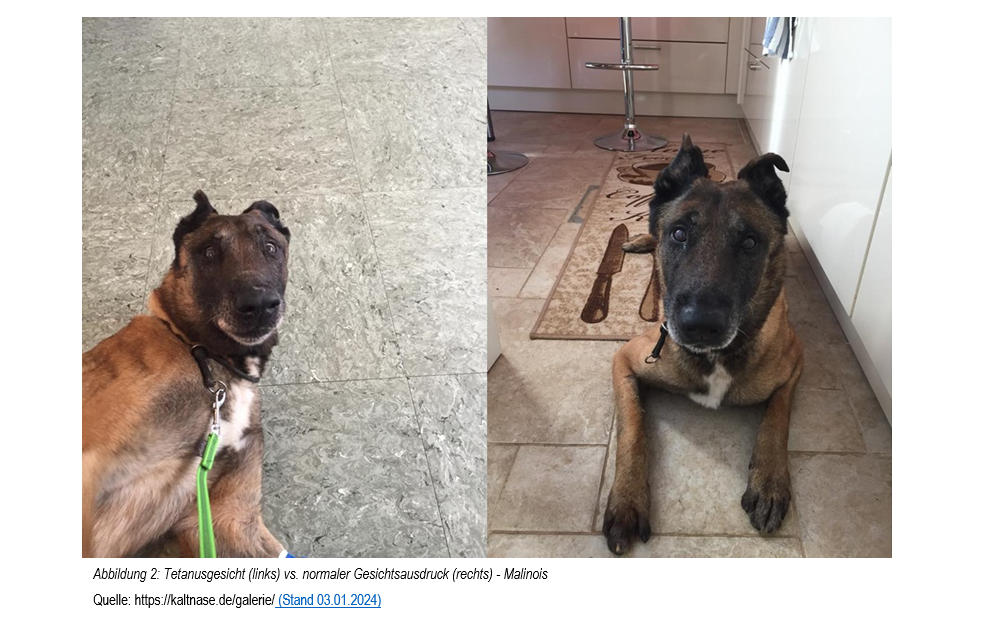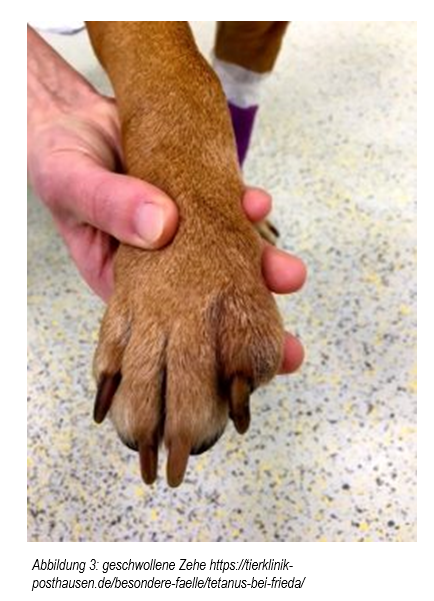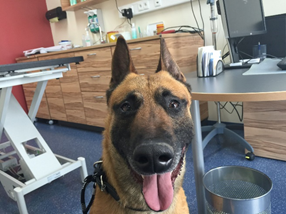Blog
Der Blog des Forums.-
Outcross & Rassekreuzungen - Schreckgespenst oder Rettungsring der Rassehundezucht – Teil 1

Erstellt 23.02.2024 14:42 von Astrid Hübner
Kategorie: Zuchtvon Alexandra Ritter und Astrid Hübner
Wir haben dieses Thema aufgrund der umfangreichen Thematik in 9 Teile aufgeteilt und starten heute mit dem ersten Teil: -
Inbreeding in German Shepherds

Erstellt 13.02.2024 17:27 von Astrid Hübner
Kategorie: English language articlesby Aina Øverland (Norway)
-
Inzucht beim Deutschen Schäferhund

Erstellt 13.02.2024 17:18 von Astrid Hübner
Kategorie: Genetikvon Aina Øverland (Norwegen)
übersetzt von Nadine Pieper -
Split Paw Pad Disease

Erstellt 13.02.2024 16:40 von Astrid Hübner
Kategorie: Gesundheitvon Nadine Pieper
-
Magenkrebs beim Belgischen Schäferhund: Eine Zusammenfassung von Forschungsergebnissen und Empfehlungen aus den Jahren 2021 und 2022

Erstellt 13.02.2024 11:04 von Astrid Hübner
Kategorie: Gesundheitvon Anna Dreher
ursprünglich veröffentlicht in der DKBS CN Nr. 183, 2. Quartal 2022 -
Tetanus (lockjaw)

Erstellt 18.01.2024 10:12 von Astrid Hübner
Kategorie: English language articlesby Lisa Ley, Dr. Sue Chandraratne und Astrid Hübner
Translated by Patricia Pehrsson
Tetanus, also known as lockjaw, is a bacterial infectious disease that affects the nervous system. The disease is caused by the bacterium Clostridium Tetani, which typically enters the body through a wounds The symptoms of tetanus can vary widely and depend on the severity of the infection.
Tetanus is a very rare, non-contagious bacterial disease in dogs caused by Clostridium Tetani. If not treated promptly, the disease can be fatal.
Humans or horses are much more susceptible to tetanus than dogs. In comparison, a dog needs 600 times the amount of toxin produced by the bacteria to trigger clinical changes similar to those in humans. Nevertheless, dogs can still suffer from the disease, often due to simple injuries, including from nails, a piece of shattered glass, a little stick. The bacteria can enter through small wounds caused by cracked paw pads, abrasions, a torn claw, gum wounds, or a broken tooth.
Even small wounds can serve as entry point for the bacteria's spores. In some cases it is even difficult to identify the wound following onset of the disease. Clostridium Tetani is present in nearly any grounds. It also can be found in everywhere in the soil but can also be found in horse dung or manure. The bacteria are resistant.
After entering through wounds, the bacteria multiply in oxygen-poor conditions (such as wound pockets) and produce toxins that are transmitted along the nerves to the spinal cord. Tetanospasmin is the most important toxin produced by Clostridium tetani, acting directly neurotoxic (damaging the nervous system).
This leads to dramatic overstimulation of the muscles with tonic contractions and a typical facial expression (two hallmark symptoms of tetanus). The incubation period is five to nine days.
Another symptom of tetanus is increased sensitivity to light, also known as Photophobia. This symptom occurs due to the effects of the toxin on the nervous system. The toxin affects the function of nerves responsible for controlling eye muscles, resulting in heightened sensitivity to light.
Initially, it is difficult to distinguish tetanus from other infectious diseases. Symptoms are flu-like, including reduced general well-being, nervousness, sensitivity to noise, or even symptoms resembling poisoning. However, suddenly occurring muscle spasms are an initial indication of a tetanus infection.
As the disease progresses, the dog will show a stiff or unsteady gait, cramping extensor muscles, or cramps while standing. The respiratory muscles, esophagus and larynx, may also be affected by cramps, posing a risk of suffocation. Affected dogs usually require artificial nutrition through a stomach tube and infusion for an extended period of time.
Another symptom that might help doctors or veterinarians in pointing out the onset of a Tetanus infection is the so-called tetanus face. The facial expression of the dog is comparable to a clenched grin. The dog's gaze becomes fixed, and the third eyelid protrudes.
Picture 1: Tetanus face (on the left) vs. normal facial expression (on the right)
Picture 2: Tetanus face (on the left) vs normal facial expression (on the right) – MalinoisProphylaxis
At the moment, no approved vaccine for dogs exists. Vaccines exists for other animals. A veterinarian can decide to use it in the course of a reassignment. However, due to possible side effects this cannot be recommended without While there are vaccines for other animal species that could be used through a process called reassignment, this can only be recommended partly.
The key to tetanus prevention in dogs lies in proper wound care. Any wounds should be promptly cleaned, disinfected, and dressed.
People who have had tetanus do not develop immunity against it. This means they can become infected with tetanus again.Case Study Katrin Stenzel – Garonne (Gaja) vom Nilpferdhof - Malinois
In April 2023, Gaja’s owner noticed a swollen ankle on her front leg. The owner Katrin didn’t think much of it as Gaja had been playing a lot the previous day. She cooled the ankle. The swelling went down significantly by day two. Katrin didn’t see an injury except that one toe was slightly swollen. With Gaja improving, Katrin was reliefed and thought things were on a a good way.
The next day, Gaja had a strange look to her; her gaze seemed empty. Katrin checked for a foreign object in her eye because the third eyelid was protruding. She then took Gaja to the vet and explained "There's something strange about her gaze!" The veterinarian responded immediately, "It’s Tetanus!" The veterinarian who had seen various tetanus cases before, immediately diagnosed Gaja. This saved her life.
The veterinarians presented Katrin with two options: either send the dog to the University Clinic Hannover for six weeks, or treatment with the animal hospital Katrin was at where Gaja would live at home. Katrin decided to keep Gaja at home and go through it together with her dog.
They immediately tried to locate the wound of source which had to be the foot. Any swollen tissue was removed from it. Often, the affected toe or other parts need to be amputated to remove the wound of entrance. No one commented on Gaja's prognosis at that time or informed Kathrin about any long term effects or when she would know that Gaja was safe.
Katrin endured weeks of of alternating hope and anxiety. Gaja received two different antibiotics: Penicillin, to kill the bacteria and stop toxin production. However, antibiotics do not affect the toxin produced to this point in time which can cause severe muscle spasms. The verinarians quickly obtained tetanus serum from a horse clinic which helps to neutralize the toxin.
Gaja had to spend weeks in the dark because any stress, light, or noise can worsen symptoms. She showed strong reactions to only minor noises which got her in an agitated state of mind. Katrin kept her in isolation on the second floor. Away from other dogs and in complete darkness. Over the following days, her condition even worsened; her face contorted completely, her ears were stiff, and she showed the grin typical for Tetanus. Katrin took Gaja out only when it was dark. If she had to get outside during the day, she placed a tower over her head (3 times a day for a maximum of 3 minutes).
Gaja didn’t improve. Her muscles kept cramping. The veterinarian prescribed a muscle relaxant and Gaja received both Ortoton and Diazepam 3 times a day. The vet made home visits to spare Gaja from unnecessary contact with light. Gaja received a lot of fluid through canned food with water and regular temperature checks. Her breathing was observed on a regular basis. Unlike many other cases, Gaja could always walk and eat, and her breathing was not affected; probably due to an early start of therapy.
Only after two weeks, the symptoms improved slightly and Katrin decided to take Gaja downstairs – also in the dark. However, Gaja's condition worsened immediately. Katrin isolated Gaja and resumed without contact and affection. Katrin felt guilty that she had taken Gaja downstairs and Gaja stayed in the dark for another 2 weeks.
Starting from week 3, the veterinarian decided to taper down the medication while Gaja showed continuous improvement. After 4 weeks of darkness, Gaja's life slowly resumed her normal life. It took her 6 weeks to resume most of her regular life.
Katrin remembers, "Those were tough times, but we got through it together. If my veterinarian hadn't recognized Tetanus as quick as he did, my dog wouldn't be with me today." Today, Gaja is an active sport dog without any restrictions.Case Study 2 – Florian Knabl – Conan vom Clan der Wölfe - Malinois
Conan was 1.5 years old when Florian noticed something was wrong during training. After calling him into the front sit, Conan didn’t run straight at him. Later, he didn’t pick up the dumbbell but bit in the air instead. When this happened, Florian stopped training to take a walk with Conan to check on him. He offered him some treats but Conan didn’t take them from the hand but rather seemed to try to take them from a shadow next to Florian. Florian noticed that Conan's eyes seemed to turn inwards. His cheeks also felt oddly stiff.
It was a holiday and Florian decided to take Conan to an emergency clinic. The attending doctor suspected an inflammation of the facial muscles with an effect on the eyes. She prescribed antibiotics but offered Florian to wait for a bit because the chief doctor was to stop by later.
A few hours later the chief doctor walked in, took a look at Conan and immediately diagnosed Tetanus due to the typical facial expression.
Florian was to take Conan home and observe the progression until the next day. Conan spent the night in a dark, quiet room. The following day, Conan's condition had already worsened significantly and Florian took him back to the animal hospital, where he was administered a small dosis of tetanus antitoxin for horses to see if he would develop an allergic reaction or could tolerate the medication.
The veterinarians examined Conan from head to paw for any injuries and only found a small red spot on one toe, equivalent to a human's index finger. This made sense. Bacteria could have entered through a small wound which immediately closed up. Ideal conditions for the multiplication of the bacterium: a low-oxygen environment and a small wound that doesn't cleanse itself through bleeding and promptly closes up.
The veterinarians amputated the toe completely. Florian prepared a room in the basement for Conan to stay in complete darkness.
However, Conan's condition worsened every day for the next two weeks. Florian received a lot of tips from friends who also had experience with Tetanus in dogs. It was a friend who suggested that symptoms can be alleviated with muscle relaxants. The treating veterinarians agreed.
Conan could always walk, although his movements were stiff like a robot’s movements. At the peak of the illness, he couldn’t turn at all and didn’t manage to get around a corner. Florian had to feed him porridge and pills through a syringe and barely managed to open Conan’s mouth sufficiently to do so.
During the last three days before finally improving, Conan couldn't drink on his own, his breathing was labored, and he was panting severely. The veterinarians injected water under his skin on a daily basis to keep him hydrated.
The long-awaited improvement began after what felt like two endless weeks. Florian noticed such improvement in Conan’s eyes. His eyes finally relaxed a bit and his gaze became clear again. From that point on, Conan improved by the day.
Approximately 8 weeks following the amputation and initial treatment, Conan was back in reasonably good shape.
3.5 years after the tetanus infection, Conan became the FMBB World Champion in IGP for the first time and reclaimed the title the following year. His success story should inspire anyone affected by this disease to confront it and not give up hope.
We express our heartfelt thanks to Katrin Stenzel and Dr. Florian Knabl for sharing their experiences. We hope that these two case studies may help recognizing and identifying early symptoms in affected dogs more quickly, ultimately saving more dogs from death due to tetanus.

Quellen:
https://modern-dogs.de/gesundheit/tetanus-beim-hund/
https://tierklinik-posthausen.de/besonde...nus-bei-frieda/
Leitlinie zur Impfung von Pferden | StIKo Vet am FLI | Stand 01.03.2023
https://www.msdmanuals.com/de-de/heim/in...kterien/tetanus
https://www.tk.de/techniker/gesundheit-u...22222?tkcm=aaus
https://kaltnase.de (abgerufen 02.01.2024)
DTBl_05_2018_Pharmakovigilanz.pdf (abgerufen 04.01.2024) -
Tetanus (Wundstarrkrampf)

Erstellt 10.01.2024 14:40 von Astrid Hübner
Kategorie: Gesundheitvon Lisa Ley, Dr. Sue Chandraratne und Astrid Hübner
-
Rollballen beim Hund

Erstellt 05.01.2024 18:12 von Astrid Hübner
Kategorie: Gesundheitvon Hannelore Fritz
-
Paroxysmale Dyskinesie (PD)

Erstellt 05.01.2024 13:10 von Astrid Hübner
Kategorie: Gesundheitvon Astrid Hübner und Dr. Sue Chandraratne
-
Your dog has been evaluated by Embark and you would like to take advantage of Feragen Dog-Matching?

Erstellt 29.12.2023 14:44 von Astrid Hübner
Kategorie: English language articlesYour dog has been evaluated by Embark and you would like to take advantage of Feragen Dog-Matching?
This is possible, but you have to keep a few things in mind.
Only the diversity data from the Embark raw data is calculated and entered into the database. Health results and body and coat characteristics created by Embark are not entered.
You will receive the diversity of your dog (not calculated by Embark) and the genetic inbreeding coefficient for 6 generations*.
It is not possible to read the DLA haplotypes from this raw data. This means that you can only use part of the dog matching.
If you not only want to check the diversity of your puppies in advance, but also want to ensure that the DLA haplotypes of your puppies, which are important for the immune system, are heterozygous, then you must order a DLA haplotype determination from Feragen.How does the registration work?
You have to download the Embark Raw Data of your dog.
Send this ZIP file and the data of your dog (name/age/breed/sex) (Or a link to a database (breed archive, Working-dog ect.) together in one mail to info@belgian-shepherd.de
You are welcome to submit all your dogs, even if they are no longer of breeding age or have already died. Even dogs that are not in breeding help us to get an overview of the population.
We will not keep any data. As soon as your dog is registered with Feragen, we will delete all data. At Feragen, the data can be removed via the project account if required. Please contact us by e-mail for this purpose.Results and dog-matching
To view the results after transferring and to use dog matching, log in to Feragen with the project account.
https://my.feragenlab.com/
Name: malinoisdiversity@gmail.com
password: Breedahealthyrace2020How does dog matching work?
How can I download the Embark raw data?
Log in to Embark
Open the profile of the dog
Scroll down and download the zip file
*Why is the inbreeding coefficient (IK or COI) different between Embark and Feragen?
The homozygosity produced by inbreeding is not randomly scattered across the chromosomes. Both natural and artificial selection produce "hot spots" of homozygosity. (Sams & Boyko 2018).
It is known that inbreeding always produces longer series of homozygosity. But in each generation, a crossover occurs during meiosis, in which sections of chromosomes are exchanged. When breaks occur in a homozygous block, a larger homozygous run is split into two smaller ones. Therefore, the blocks are expected to become shorter over the generations, i.e. the oldest inbreeding is occupied by the shortest blocks.
Embark calculates all blocks for the inbreeding coefficient while Feragen only calculates the newer inbreeding - i.e. the longer blocks - within the last generations. This can lead to a considerable difference between these two values. There is no scientific consensus on the extent to which old inbreeding should be taken into account. Since Feragen's dog matching focuses on the diversity of genes, the inbreeding coefficient is only of secondary importance. -
Gewissensfrage Zucht - Epilepsie

Erstellt 06.12.2023 10:46 von Astrid Hübner
Kategorie: Zucht
Da hat man als Züchter seinen ersten Wurf auf den Weg gebracht, hat vielleicht eine vielversprechende Nachwuchshündin behalten und ist stolz darauf, die zweite eigene Generation zu planen. Und dann klingelt das Telefon und ein Welpenbesitzer überbringt die schlechte Nachricht: Bei seinem Hund wurde idiopathische Epilepsie diagnostiziert (oder jegliche andere Erkrankung, die mutmaßlich erblich ist).
Nach dem ersten Schock fangen die Gedanken an zu kreisen… Und nun? Kann ich mit der Mutter weiterzüchten? Kann ich guten Gewissens überhaupt die Schwester zur Zucht einsetzen? Immer wieder werden andere Gründe als die Vererbung gesucht, sind die Anfälle nicht doch aufgrund eines Giftes oder Medikamenten entstanden?
Dieser Artikel wird Euch diese Fragen nicht beantworten können. Er wird Euch auch keine klare Handlungsanweisung liefern. Aber er soll Euch eine Hilfestellung geben, um für Euch die richtige Entscheidung zu treffen. Durch Recherche und das gegeneinander abwägen von Vor- und Nachteilen. Die Rassehundeclubs geben vor nur mit gesunden Tieren zu züchten. Eine Handlungsanweisung für Eltern und Geschwister gibt es in der Regel meistens nicht. Somit ist die Hundezucht – für Züchter und Deckrüdenbesitzer gleichermaßen – eigenverantwortliches Handeln.
Es liegen zehn Studien vor, die sich speziell auf die idiopathische Epilepsie beim Belgischen Schäferhund konzentrieren Hauptsächlich werden in diesen Studien die Varietäten Groenendael und Tervueren untersucht. Diese relativ hohe Anzahl an Studien macht den Belgischen Schäferhund zu einer der am intensivsten untersuchten Hunderassen auf dem Gebiet der Hundeepilepsie. Bereits Ende der 60er Jahre wurde vermutet, dass die idiopathische Epilepsie bei unserer Rasse erblich ist [1].
Obwohl der klinische Phänotyp der idiopathischen Epilepsie beim Belgischen Schäferhund gut beschrieben ist und umfangreiche Forschungsanstrengungen unternommen wurden, war es bisher nicht möglich, die ursächliche(n) Genmutation(en) zu identifizieren, die für die idiopathische Epilepsie verantwortlich ist [1].
Aufgrund immer wieder an uns herangetragene Fragen zum Zuchteinsatz von Wurfgeschwistern und/oder Elterntieren bei an idiopathischer Epilepsie erkrankten Hunden haben wir an die Uni Bern und die TiHo Hannover folgende Frage gestellt:
Wie würden Sie im Rahmen der Zucht mit Wurfgeschwistern und Elterntieren des an idiopathischer Epilepsie erkrankten Hundes umgehen? Würden Sie diese weiter zur Zucht einsetzen oder Wurfgeschwister ausschließen?
Antwort von Prof. Dr. Tosso Leeb (Institute of Genetics, University of Bern):Zitat
Bei Epilepsie rate ich strikt von einem Zuchteinsatz betroffener/epileptischer Hunde ab. Das ist aber meine einzige klare Zuchtempfehlung. Man kann zusätzlich erwägen, nicht-betroffene Eltern und Geschwister von betroffenen Hunden von der Zucht auszuschließen, aber damit schränkt man schon wieder den Genpool ein und man darf einfach nicht zu viele Hunde von der Zucht ausschließen. Bei den meisten Fällen von Epilepsie kennen wir heute die genauen Mechanismen der Vererbung nicht und können daher auch keine präzisen Zuchtempfehlungen geben. So macht es zum Beispiel einen großen Unterschied, ob ein Risiko-Allel für Epilepsie dominant oder rezessiv ist. Wenn man die beiden Eltern eines epileptischen Hunds in der Zucht lässt, würde ich von einer Wurfwiederholung abraten. Ich würde die nicht-betroffenen Geschwister eines epileptischen Hunds nicht "schlechter" bewerten als die Eltern. Allerdings wäre ich in der Tat besonders vorsichtig mit einem möglichen Zuchteinsatz eines 2-jährigen Hundes, wenn bei einem Geschwister im Alter von 21 Monaten der erste epileptische Anfall aufgetreten ist. Man muss dann das Risiko abschätzen, ob das fragliche Geschwistertier vielleicht auch noch selbst an Epilepsie erkranken könnte und dann sollte man so ein Tier natürlich nicht zur Zucht einsetzen.
Antwort von Dr. Nina Meyerhoff, Tierärztin, DipECVN (Stiftung Tierärztliche Hochschule Hannover):Zitat
Für die wenigsten Rassen bzw. Epilepsieformen ist bisher ein einzelnes Gen mit Defekt als Auslöser beschrieben (Benigne familiäre juvenile Epilepsie beim Lagotto Romagnolo, Juvenile Myoklonische Epilepsie beim Rhodesian Ridgeback), selbst diese Rassen können leider auch andere idiopathische Epilepsien aufweisen.
Insgesamt ist die idiopathische Epilepsie bei den meisten Patienten vermutlich polygenetisch verursacht, also bestimmte Genkombinationen und dann eine individuelle „Penetranz“ (Ausprägung der Symptome). Wir empfehlen aktuell, mit Vollgeschwistern nicht zu züchten und die risikobehaftete Verpaarung der Eltern zu vermeiden, aber das Wissen kratzt hier noch an der Oberfläche und exakte Zuchtempfehlungen sind schwierig. Für die Zukunft sind hier Datenbanken sehr wichtig, ähnlich wie in Skandinavien. Leider ist die idiopathische Epilepsie eine Erkrankung, die auch im mittleren Alter sichtbar werden kann, wenn der Hund evtl. schon zur Zucht eingesetzt wurde.
Wie findet man heraus, ob eine Verpaarung risikobehaftet ist?
Durch Gespräche und Austausch mit Züchtern und Haltern. Und durch Datenbank-Recherche! Und ja, es ist ein aufwändiges Unterfangen, sich durch Datenbanken zu wühlen, um an Informationen zu erkrankten Tieren zu kommen. Aber es ist neben dem persönlichen Austausch zwischen Züchtern und Haltern eine weitere Möglichkeit an Informationen zu gelangen. Leider sind viele Datenbanken unvollständig. Nicht jeder kranke Hund wird den Zuchtverbänden gemeldet, noch weniger werden in die Datenbanken eingepflegt. Wir versuchen mit Aufklärungsarbeit und Hilfestellungen für Züchter und betroffene Hundehalter das Bewusstsein zu schärfen, dass es für die Aufklärung wichtig ist die betroffenen Hunde beim Zuchtverband zu melden und Blut für die Forschung einzuschicken.
Diese vier Datenbanken sind aktuell zu empfehlen:
The International Epilepsy Register
Czech database
The Breed Archive
DKBS
Auch in anderen Datenbanken kann man ebenfalls vereinzelt fündig werden. Weitere Datenbanken findet ihr in unserem Forum (Stand 12.11.2023).
Wenn man nun die eigene Linie der Zuchthündin und die Linie der ausgesuchten Deckrüden durchforstet hat– wie kann man das Risiko dann abschätzen?
Man kann prinzipiell das Risiko aus der Epi-Zahl nach Ahnentafel des Hundes in fünf Generationen berechnen. Immer unter Berücksichtigung der erkrankten Hunde und ihrer nahen Verwandten sowie der Generation, in der sie vorkommen [2]. Der Grundgedanke kommt aus Finnland.
Die aus den Daten berechnete Kennzahl beschreibt gewichtet das Auftreten von Epilepsiefällen bei den Vorfahren des betrachteten Hundes und bietet bei ausreichender Informationslage eine Vergleichbarkeit zu anderen Hunden mit vergleichbarer Informationslage. Diese Exceldatei könnt ihr euch HIER herunterladen.
Über den Gesundheitszustand der unterschiedlichen Zuchtlinien wird leider nur wenig offen kommuniziert. Es ist also nicht immer einfach, verlässlich viele Informationen zu erhalten, um ein Risiko abschätzen zu können. Man kann nur immer wieder betonen, dass es unheimlich wichtig ist, erkrankte Hunde zu veröffentlichen. Nur so kann ein Züchter das Risiko überhaupt einschätzen.

Quellen:
[1] https://bmcvetres.biomedcentral.com/arti...2917-015-0463-0 (Stand 11.11.2023)
[2] https://spj.fi/rodut/suomenpystykorva/te...8S3vtzoMCdg11TY (Stand 11.11.2023) -
Kryptorchismus - Was ist das?

Erstellt 23.10.2023 15:17 von Astrid Hübner
Kategorie: Gesundheitvon Lisa-Celine Ley, Rosa Kaden, Manuela Wolters
Unter Kryptorchismus (Hodenhochstand) beim Hund versteht man das Nichtabsteigen eines oder beider Hoden in den Hodensack (Skrotum) zum eigentlich richtigen Zeitpunkt. -
Ist dein Hund bereits Embark ausgewertet und du möchtest die Vorteile des Feragen Dog-Matching nutzen?

Erstellt 22.10.2023 10:18 von Astrid Hübner
Kategorie: AllgemeinIst dein Hund bereits Embark ausgewertet und du möchtest die Vorteile des Feragen Dog-Matching nutzen?
Das ist möglich, aber du musst ein paar Sachen beachten. -
Teste deinen Hund

Erstellt 18.10.2023 13:44 von Astrid Hübner
Kategorie: AllgemeinDer DogCheck 4.0 ist der Rundum-Sorglos Gesundheitstest für Züchter und (Mischlings)-Hundebesitzer. In der neuesten Version der genetischen Screening-Untersuchung werden bis zu 220 Erkrankungen, Fellfarben, Fellbeschaffenheiten und Diversität analysiert.
-
Persistierende Milchzähne

Erstellt 05.07.2023 19:08 von Astrid Hübner
Kategorie: GesundheitVon Nina Leibfahrt
